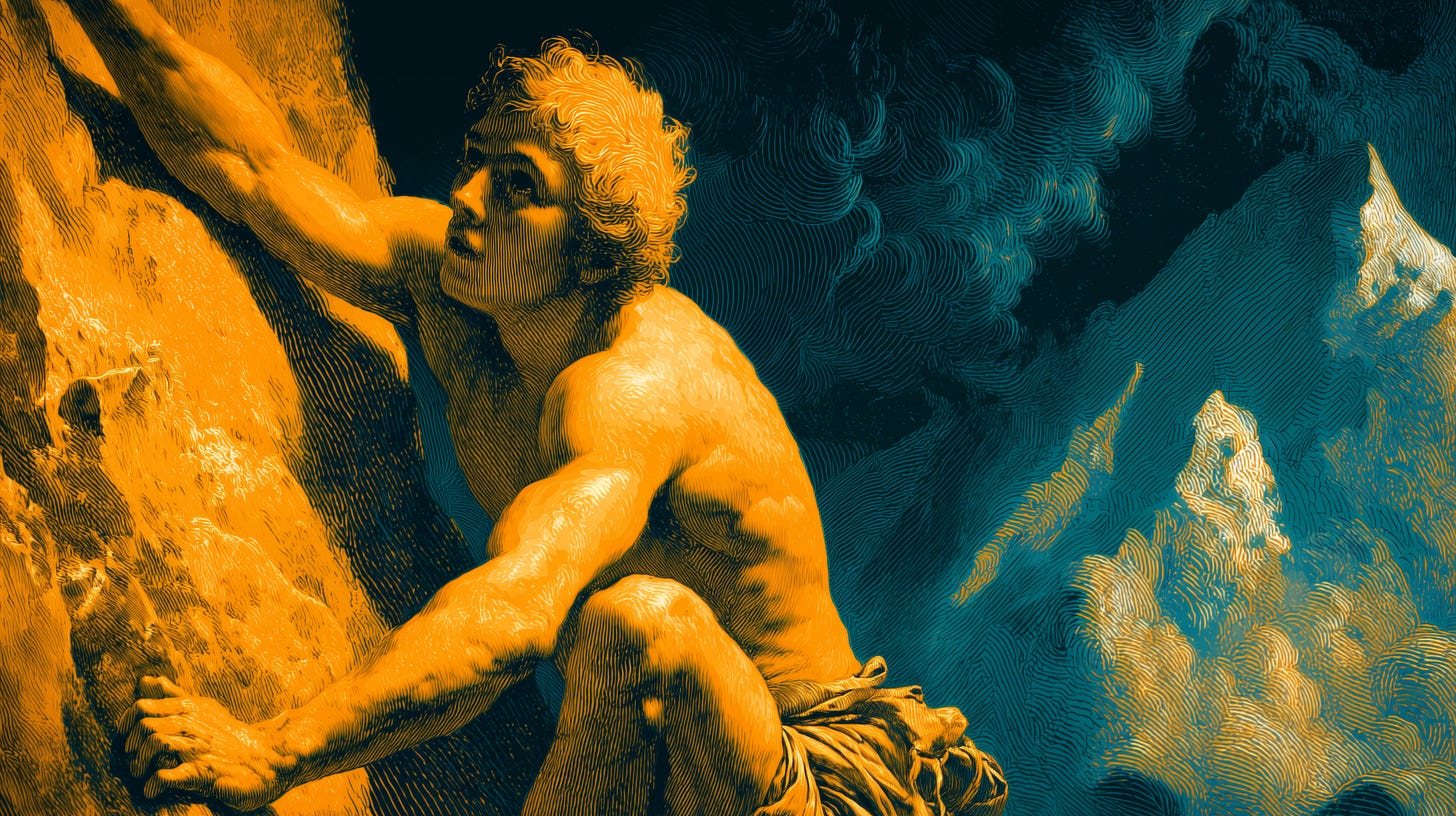Masters Never Stop Climbing
Why sustainable striving matters more than reaching the summit
Picture graduation day.
You’re wearing the cap and gown, listening to some successful person tell you to “go out and make something of yourself.” The subtle promise is clear: work hard now so you can rest later. Climb the mountain so you can enjoy the view.
I believed this.
I thought there was a summit waiting for me. A point where I could exhale and say “I made it.” Where the striving could stop and the arriving could begin.
But most of the people I talk to in their mid-twenties are already exhausted.
We’re told to keep climbing, but the path ahead looks steep.
It’s not whether to keep striving, but how do you do it without burning out.
Which makes watching the masters at their craft even most confusing.
They never acted like they’d arrived. They never stopped climbing.
Muhammad Ali didn’t retire to a beach after his championship years. He kept fighting exhibitions, perfecting his combos.
Picasso didn’t sell his brushes at 70. He painted until the day he died at 91.
Charlie Munger didn’t retire at 62 and cash out his social security check. He was attending board meetings and dispensing wisdom at 99, still learning, still curious.
They had energy until the end.
It’s because of how they approached it.
Sustainable Striving
The difference isn’t talent or work ethic. It’s that masters build systems that make sustained effort possible. There’s three ways I think about doing this:
Choose A Worthy Struggle (What You Climb)
Not all mountains are worth climbing.
You have to tackle A+ problems. The kind of challenge so difficult and important that they’re worth sustained effort. The kind you could work on for years and still find new depth.
Ali’s A+ problem was the sweet science of boxing. Picasso’s was visual expression. Munger’s was understanding how the world really works.
What nobody tells you is if you’re climbing the wrong mountain no amount of energy will save you. You’ll try to optimize yourself into exhaustion on something that was never worth it to begin with.
The first requirement is choosing a problem big enough to justify the effort.
Match Energy to Task (How You Climb)
Scott Adams, creator of Dilbert, discovered a truth that changed how he works: “I can produce more in fifteen minutes with the right energy than four hours with the wrong energy.”
Energy always beats time.
This is what psychologist would call “full engagement”: being physically energized, emotionally connected, mentally focused, and spiritually aligned with a purpose beyond self-interest.
When you have full engagement struggle draws something deeper out of you.
Ali trained in the early morning when his body was fresh. Picasso painted during his optimal creative windows. Munger structured his days to protect his thinking time.
They worked when they had the right energy for what mattered.
This is the second requirement. Stop optimizing for time and start optimizing for energy.
TransformWork to Craft (Why You Keep Climbing)
In “Zen and the Art of Motorcycle Maintenance,” Robert Pirsig describes watching mechanics work while listening to the radio. They showed no identification with their profession. No sense that being a mechanic meant something to them personally.
They had a job. Not a craft.
The difference? Caring.
“Caring about what you are doing is considered either unimportant or taken for granted,” Pirsig wrote. “But it might be the antidote to what’s gone wrong.”
When you care about your work you identify with it as a craftsman, not an employee. Something fundamental shifts.
The work itself becomes the fuel.
You’re not trying to get through it. You’re trying to get it right.
But this only flows from work you care about. Work you consider a part of your craft.
Ali cared about perfecting his combinations. Every exhibition was a chance to refine his art. Picasso cared about visual expression. Every canvas was an experiment. Munger cared about understanding reality. Every board meeting was a learning opportunity.
They weren’t grinding toward some future payoff. They were engaged in work they found meaningful.
This is the final requirement: Find where you can transform your work from job to craft. Where you can care more deeply.
How It All Works Together
Now watch how these three elements combine in Ali’s life:
He chose an A+ problem (boxing) worthy of sustained effort. He trained during his peak energy windows, not according to some arbitrary schedule. He cared deeply about his craft. Every fight was a chance to perfect his art.
Result? Sustainable striving. Energy that lasted decades.
The summit was always a mirage. But that didn’t matter. He wasn’t trying to arrive somewhere. He was making the most of himself right now, in work he found meaningful, during windows when he had the energy to do it well.
That’s not burnout. That’s the opposite of burnout.
The striving really is the whole point. But only if you structure your life to make the striving itself sustainable.
Otherwise, you’ll burn out at base camp, wondering why you couldn’t just push through.
The answer was never about pushing harder.
It was about choosing better mountains and climbing them during daylight.



